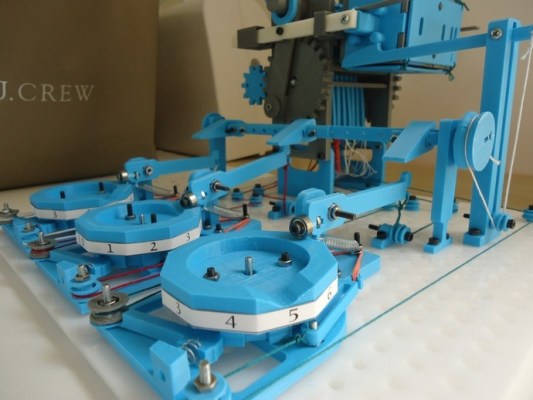As a lover of all things mechanical, I’m in awe of Chris Fenton’s Entabulator. Using an old book about mechanical loom-making, a 3D printer and some serious patience, he engineered a computer that can read a program off of punch cards and, in this case, calculate the Fibonacci sequence. The machine runs using a hand crank (Fenton notes you can overclock it by cranking faster), and it is quite finicky but also quite beautiful in its own way.
Obviously the world doesn’t need this Entabulator. It is so wildly impractical that it’s almost ludicrous, and the usability is limited (at least in this iteration). But isn’t it great that it exists? I’ve been messing around with 3D printers for most of this year and I’ve found a great deal of joy in wresting the means of production from Big Plastic by mass producing little parts and trinkets (this is my new business card) but I’ve also come to understand the real value of 3D printing.
In short, these things allow us to create what we can imagine. Whereas a few years ago, building something like this out of wood and metal required a different set of skills and tools, now you can build most of it online and “build” it in a few hours. It allows for hacking in a very real sense — the consequences of failure are almost nil when you use these tools as compared to situations where a builder has to work in less forgiving materials.
The Entabulator, while beautiful, is more important as an artifact of a post digital age when machines can beget machines. It’s actually quite thrilling.
You can download the project here and build one yourself. Because it’s programmable, you can entabulate all sorts of stuff — a dubious but exciting prospect, to be sure.
